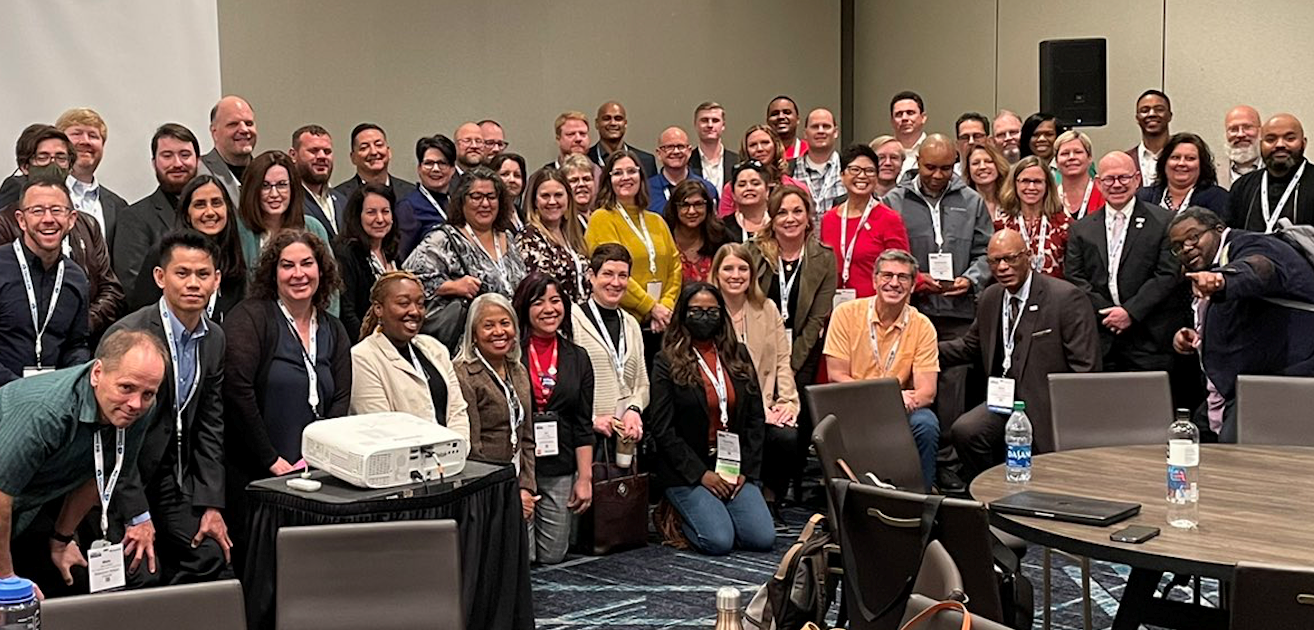What Does Diversity, Equity, and Inclusion Look Like in Practice?
At the CoSN conference in Nashville, school district administrators gathered for the first annual meeting of “The Network” to discuss what DEI looks like in practice in their districts - and what more work needs to be done.

Diversity, Equity, and Inclusion (DEI) was one of the key themes at this year’s CoSN conference in Nashville, where more than 1,500 district administrators and industry partners gathered for the first hybrid CoSN conference – and the association’s largest conference to date. This hybrid event offered dozens of in-person sessions and activities, along with virtual sessions for those who could not attend in person.
There was a palpable energy and enthusiasm of being back together in person as attendees reconnected with old friends and met new colleagues. CoSN’s commitment to diversifying the program was evident in the many inspiring speakers, including Raj Adusumilli, Assistant Superintendent/CIO of Arlington Public Schools, Michael Hinojosa, Superintendent of Dallas Independent School District, Christopher Emdin, Professor of Education at the University of Southern California, and many others.
The Network Meetup
The conference kicked off with the first “Network Meetup,” hosted by CoSN’s DEI committee. More than 100 attendees gathered for this informal conversation, held in small groups, in which we explored the following questions:
- What does “Diversity, Equity, Inclusion, & Accessibility” look like in practice in your district?
- How does your district create pathways for diversity across the continuum of a career?
- How might you move from awareness to action to support a more diverse leadership team?
What follows are some of the challenges and successes captured during these conversations.
Diversifying staff
Many attendees talked about the challenges of finding diverse candidates for staff openings, but admitted they needed to do a better job of diversifying their outreach. Attendees discussed the importance of doing “intentional outreach.”
“Leadership is modeling equity experience and impact for color, and gender,” said one attendee. “If you don’t have a diverse pool, go find them,” said another attendee. “Walk through the schools and look for the talent.”
Other key discussion points included:
Tech & Learning Newsletter
Tools and ideas to transform education. Sign up below.
- What geographic locations have not been explored?
- What language are you using in your job descriptions?
- How can you recruit students to consider careers in education?
- How can you better support your teachers to pursue department-level careers?
- Do you have a succession plan for your role as an administrator that supports diversity?
- Consider recruiting from Historically Black Colleges and Universities (HBCUs) and bring a diverse pool of recruiters to be present at recruitment events.
- Add hiring bonuses focused on finding more diverse candidates.
- Consider non-technical candidates for department positions and offer training.
Diane Doersch, Director of Technology for the Verizon Innovative Learning Schools at Digital Promise, offers a great resource on how to be more intentional about your hiring practices here.
Removing the politics from conversations about “diversity”
Many rural district attendees said that their communities often hear “diversity” and think “politics,” so they don’t talk about it. Some attendees discussed historical racism in their communities that have spilled over to combative school board meetings.
Some advice to address this issue included finding common ground and inviting all stakeholders to the conversation, such as bringing in teachers and principals to discuss implicit biases in a non-judgmental forum.
Creating an inclusive school culture
One attendee shared takeaways from Belonging Through A Culture of Dignity, a new book by two educators, Floyd Cobb and John Krownapple, which cites three concepts as keys to successful equity initiatives: inclusion, belonging, and dignity.
One attendee from New York shared this link to clubs that raise diversity awareness. How is your district being inclusive in their meetings and activities?
Ensuring access for all students
The pandemic forced many schools to go one-to-one, but ensuring continued equitable connectivity remains crucial. Beyond simply giving devices to all students, are teachers considering all pieces of equity and access when creating lesson plans? For example, sending a pdf of a worksheet that needs to be printed is not an equitable practice.
What training can your district offer to support teachers in creating equitable lesson plans in ways that are not overwhelming? What creative access points can you continue to offer to your communities? Addressing these challenges is critical in building equitable environments.
The conclusion of these conversations were unanimous: there is still much work to do to ensure our districts are supporting DEI in practice, but by continuing this conversation across the country through events like “The Network,” we can work as a community to improve our efforts.
Christine Weiser is the Content and Brand Director for Tech & Learning, and has been with the company since 2008. She has reported on education for most of her career, working at Scholastic and Gale Publishing before joining Tech & Learning. Christine is also an author and musician, and lives in Philadelphia with her husband and son.
